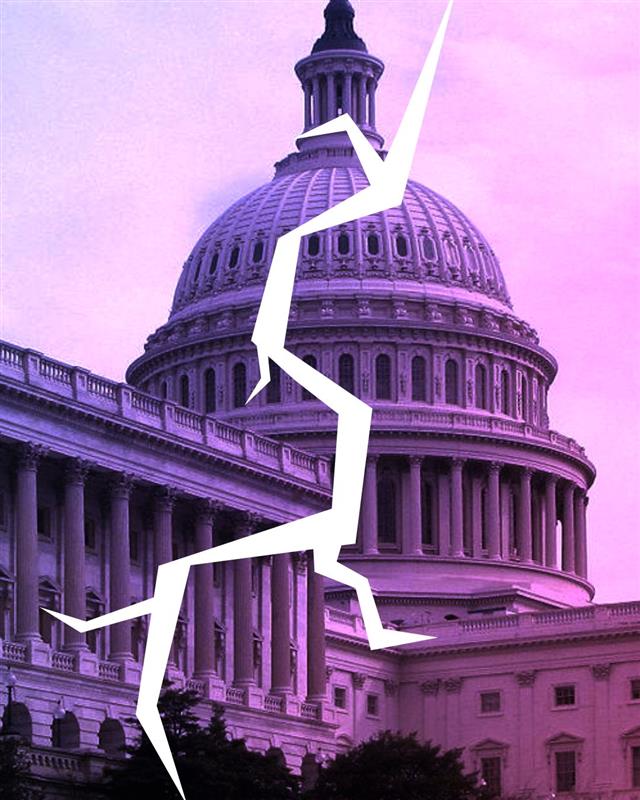The Senate passed the tax bill. What happens next?
The so-called “One Big Beautiful Bill Act” (OBBBA) went to the House after passage in the Senate. The House will consider and approve the changes, amend the bill and send it back to the Senate, or go into conference with the Senate. If the House passes the bill as amended by the Senate, then it goes to Trump for his signature.
On July 1, the Senate passed the so-called “One Big Beautiful Bill Act” (OBBBA), H.R. 1. Although Republicans hold 53 seats, Sens. Susan Collins (R-ME), Rand Paul (R-KY), and Thom Tillis (R-NC) voted against OBBBA, and all 47 Democrats voted against the bill, JD Vance had to break the 50 to 50 tie for passage.
The House didn’t waste any time. The House Rules Committee took up the rule providing for consideration of OBBBA on the floor, but the vote in the committee showed signs of problems on the House floor. Reps. Chip Roy (R-TX) and Ralph Norman (R-SC) voted against the rule. Roy and Norman are among a handful of conservatives and moderates who are, at least for now, planning to vote against the bill if it’s brought to the floor for a vote. See below for those concerns.
The thing is, many of these Republicans have railed against legislation before casting their vote for it, so it’s hard to take most of them seriously until they actually follow through on their threats. Trump is making an example out of Rep. Thomas Massie (R-KY), who voted against the original version of OBBBA, by supporting a primary challenge. Trump allies are already running ads in Massie’s district against him.
The targeting of Massie serves as a powerful example of the political problems that can arise from opposing Trump. That may be enough to push conservatives and moderates who have concerns about OBBBA to vote for it. Indeed, by the time this is published, OBBBA may have passed the House and be on the way to the White House by the time this is published.
If House Republican leadership scraps enough votes together for OBBBA as passed by the Senate, then the bill goes to Trump for his signature. It’s hard to predict when that’ll happen if those threatening to vote against the bill continue to hold out. Any changes to OBBBA mean the bill must be returned to the Senate. Think of it as a game of legislative ping pong.
The House could also opt to go into a conference committee with the Senate to iron out a final agreement. The differences between the House and the Senate versions of the Tax Cuts and Jobs Act of 2017 were solved in a conference committee. It’s possible that could happen with OBBBA.
Is the tax bill better or worse than the original House bill?
In terms of the budgetary impact, OBBBA as amended by the Senate is worse than the original House-passed version. The House-passed version wasn’t much better, but the Senate version is projected to increase deficits by $4.1 trillion over the next ten years and bring $3 trillion annual budget deficits by at least FY 2033. It’s also likely to increase interest rates for both money the federal government borrows and for consumers.
I suppose the answer depends on your perspective. The increase in the deficit caused by OBBBA in the original House version was horrible. The Senate managed to make it worse. The House-passed OBBBA increased the deficit by $2.416 trillion over ten years. That rises to $3 trillion once the $551 billion in new interest costs are factored into the equation.
The Senate version of OBBBA would increase the deficit by $3.4 trillion, or approximately $4.1 trillion when interest is factored in. To the extent that there is deficit reduction in the Senate version of OBBBA, 77 percent of those savings don’t occur until the latter half of the ten-year window (FY 2029 through FY 2034). In other words, those savings may not take effect. It’ll depend on which party controls Congress and the White House.
Even with the deficit reduction that’s in the bill–much of which comes through changes to Medicaid–annual deficits are expected to rise to approximately $3 trillion or higher beginning in FY 2033. That’s my math using the Congressional Budget Office’s January 2025 baseline. Interest costs are likely to be higher, so $3 trillion deficit could happen sooner. Under the January 2025 baseline, without the effects of OBBBA, the budget deficit isn’t projected to reach $3 trillion until FY 2039.
Of course, we’re concerned about the indirect of effects of OBBBA on the economy as much as the direct effects on the budget. There’s little question that OBBBA will increase borrowing over the next decade and beyond. We were already staring down $2 trillion budget deficits. OBBBA will exacerbate that, forcing the issuance of new Treasury securities to finance the debt. The flood of securities will have upward pressure on yields (meaning a higher rate of return for those who buy them) and, thus, increase borrowing costs. That’ll crowd out private investment and push up borrowing costs for consumers on everything from home loans to car loans.
So, yeah, the Senate version of OBBBA, which the House is poised to pass or may have already passed by the time you read this, is markedly worse.
What’s the significance of the Supreme Court’s decision in the birthright citizenship case?
The Court didn’t consider the merits of birthright citizenship. Rather, holding in Trump v. CASA, Inc. severely limits nationwide injunctions, except in class action lawsuits. The number of nationwide lawsuits issued against Trump administration policies is predominantly due to the unprecedented actions taken by the administration through executive orders and actions. Except in rare circumstances, only the Court can issue nationwide injunctions.
To be clear, the Court didn’t weigh in on the merits of Trump’s executive order, essentially ending birthright citizenship. What the Court’s opinion in Trump v. CASA, Inc. (2025) does is severely limit nationwide injunctions issued by federal district courts. The administration, congressional Republicans, and conservative pundits have been highly critical of nationwide injunctions issued against executive orders and actions taken by Trump. At least 39 injunctions have been issued. To put that in context, there were as many as 64 in Trump’s first term while courts issued 12 nationwide injunctions against policies of the Obama administration in eight years and 14 against the Biden administration in four years. Only six were issued against the Bush administration.
As conservatives have said, this many nationwide injunctions is unprecedented. No question. What conservatives don’t say is that the executive orders and actions of the Trump administration are also unprecedented. For example, the birthright citizenship executive order challenges precedent established by the Court in Wong Kim Ark (1898), not to mention centuries of common law (jus soli).
In Trump v. CASA, Inc., the Court held that injunctions issued by lower courts can be limited only to the plaintiff in a particular case, rather than everyone. The exception is in class action lawsuits, in which nonparties can receive relief. The Court held that the Judiciary Act of 1789, part of which remains in statute in Title 28 of U.S. Code, doesn’t provide district courts with authority to issue nationwide injunctions. The Court itself retains the authority to apply nationwide injunctions.
The problem with the holding is that the Court has upheld injunctions issued by district courts in the past regarding illegal actions, a point Justice Sonia Sotomayor raised in her dissent. Based on precedent established by Wong Kim Ark, the executive order on birthright citizenship is an illegal act.
The scheme the Court has essentially created means that liberty may be denied across the board until the Court itself puts a stop to it. Considering the pace at which the merits of a particular case may take to work their way through the court system, an illegal act may not be reversed, if it’s reversed at all, for two or three years. That’s highly problematic.





%201.jpg)